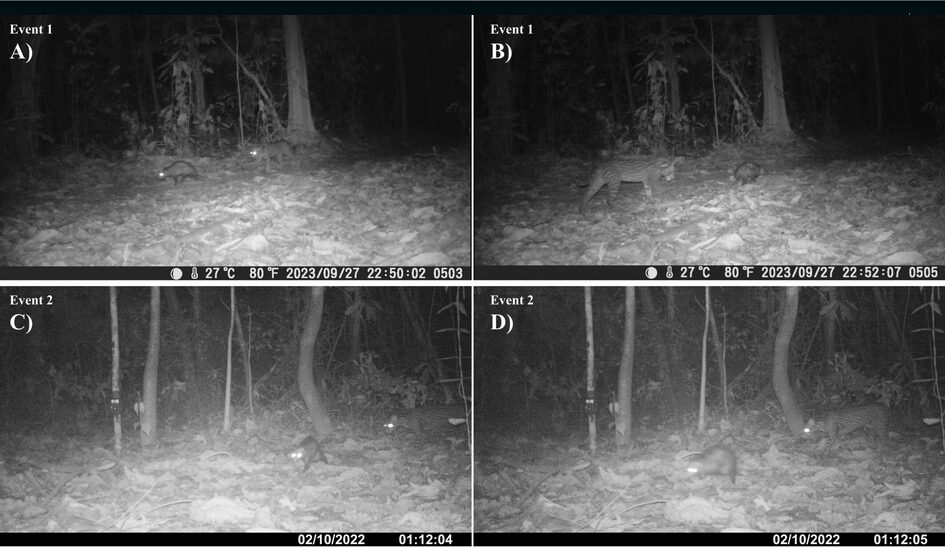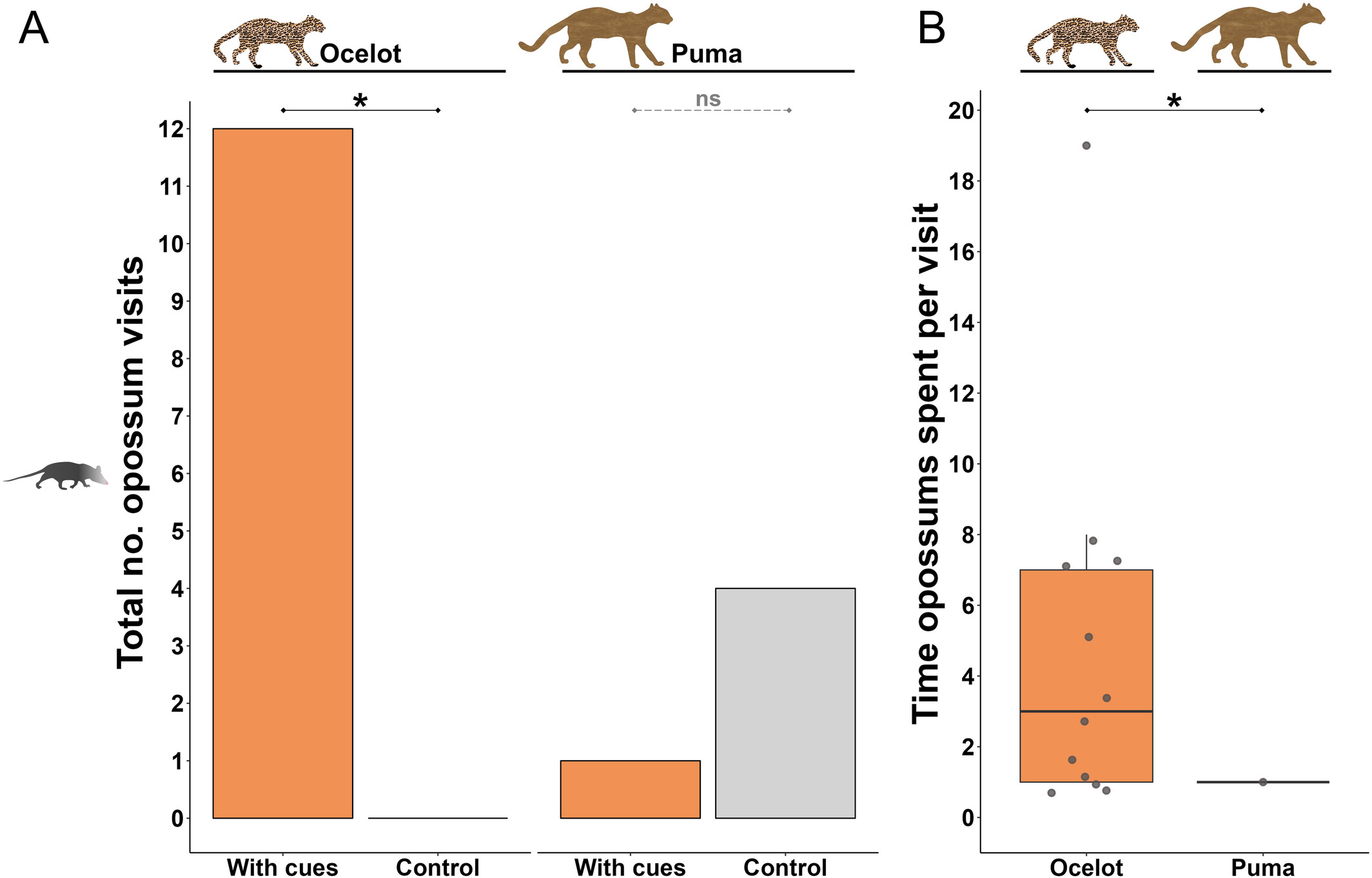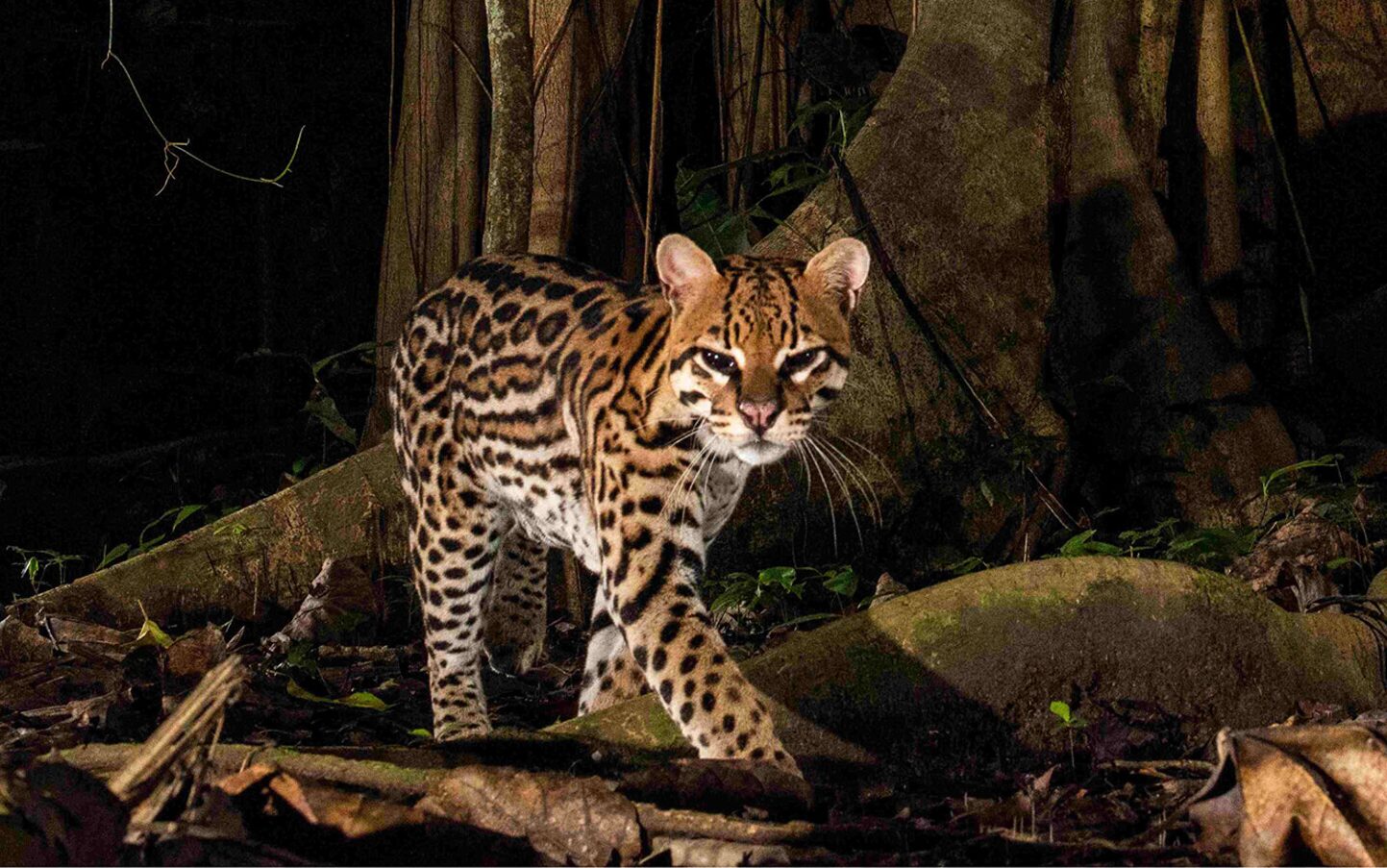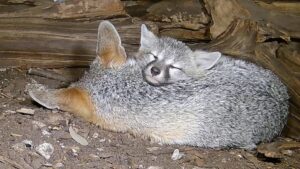Camera traps in the jungles of Peru have captured footage of ocelots and opossums traveling together. We have at least four confirmed cases of the two animals walking in tandem, seeming to be perfectly aware and comfortable with the other’s presence. The pairs were never more than two meters apart, moving at a leisurely pace. Their body language is relaxed, the opossum never attempting its famous “play dead” manoeuvre.
Experts believe that these aren’t isolated incidents, but a pattern of behavior. A group of ecologists and researchers released a new study speculating on what that behavior could mean.

Just two friends hanging out. Photo: Camerlenghi et al
Sniff test
Before they developed formal theories, the researchers needed to collect more data. Ocelots might seek out opossums to hunt them, but would opossums actively seek out ocelots?
To find out, they set up camera traps with ‘ocelot cues’ — items which gave off the scent of an ocelot, usually a strip of fabric — and waited. Opossums showed up and even interacted with the ocelot cues, sniffing, biting, or rubbing themselves on the fabric. Opossums visited the ocelot-scented cameras far more often than control cameras.
To confirm that it was specifically ocelots that the little marsupials were interested in, they repeated the experiment. Using control and puma (cougar, catamount, mountain lion) scented traps, they observed that the opossums preferred the control, apparently disdaining the company of puma.
Both animals are solitary within their species, yet the ocelot and opossum don’t just fall in together, but actively seek each other out. The question remains, why?

This graph shows the relative interest opossums showed in various camera traps, with and without ocelot scent. Photo: Camerlenghi et al
Much we don’t know
Mutual partnerships between species are not rare and form when both sides have something to offer the other. Coyotes and badgers sometimes partner up to hunt burrowing prey. Their different adaptations and hunting strategies complement each other — the coyote handles the chasing, and the badger handles the digging.
One theory is that the ocelot and opossum partnerships work much the same way. Opossums often feed on snakes and are even immune to viper venom, like the eponymous hero of Rudyard Kipling’s short story Rikki-Tikki-Tavi. Perhaps the pairs team up to hunt serpents.
The researchers also speculate that moving as a pair may be a sort of camouflage. By moving with the notoriously odoriferous opossum, the ocelot could hide its scent, making it easier to stalk prey. Moving with the ocelot, the opossum would be safer from pumas and jaguars.
Ultimately, we don’t know if one, both, or neither of these theories is correct. The study concludes with a call for more research, and a reflection on what this find reminds us: “how limited our understanding remains of the complex dynamics among tropical rainforest species.”






